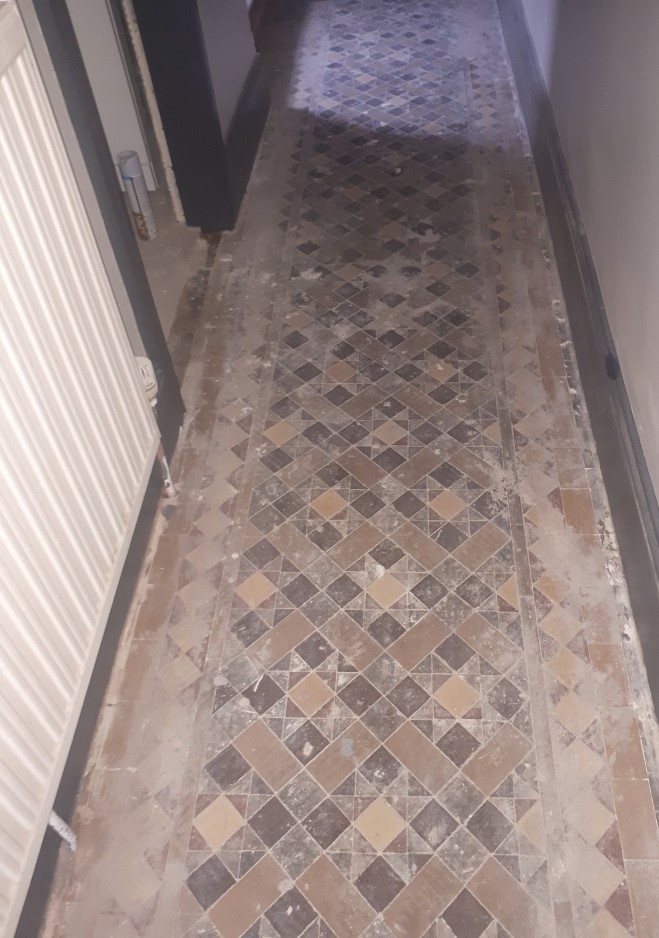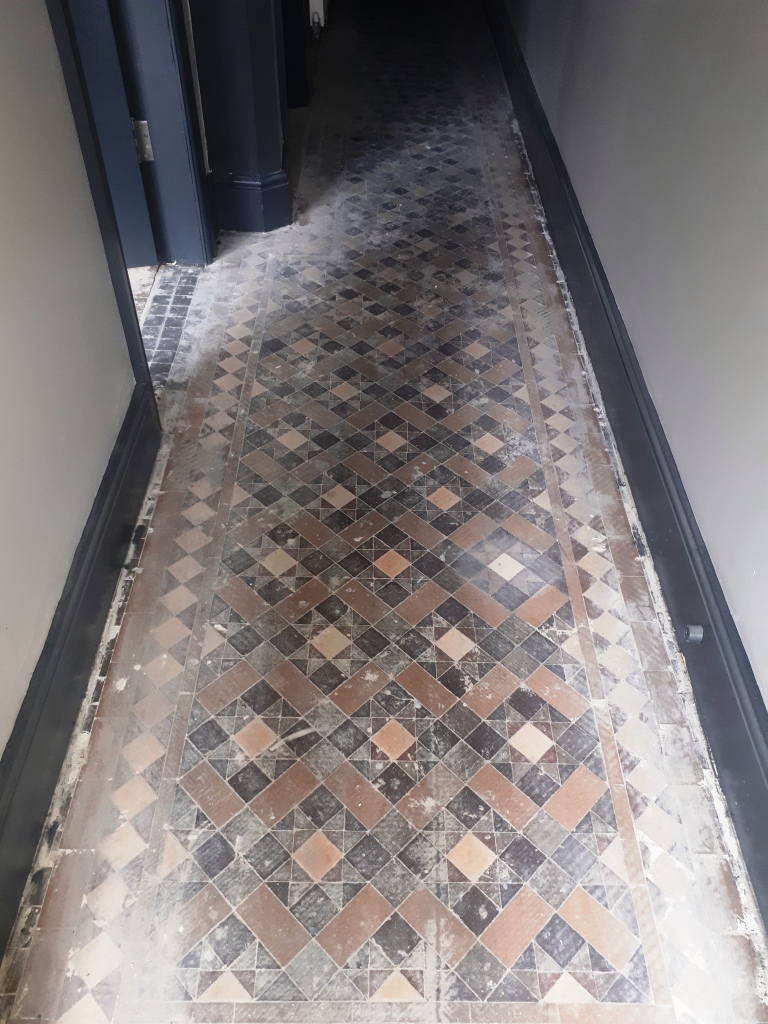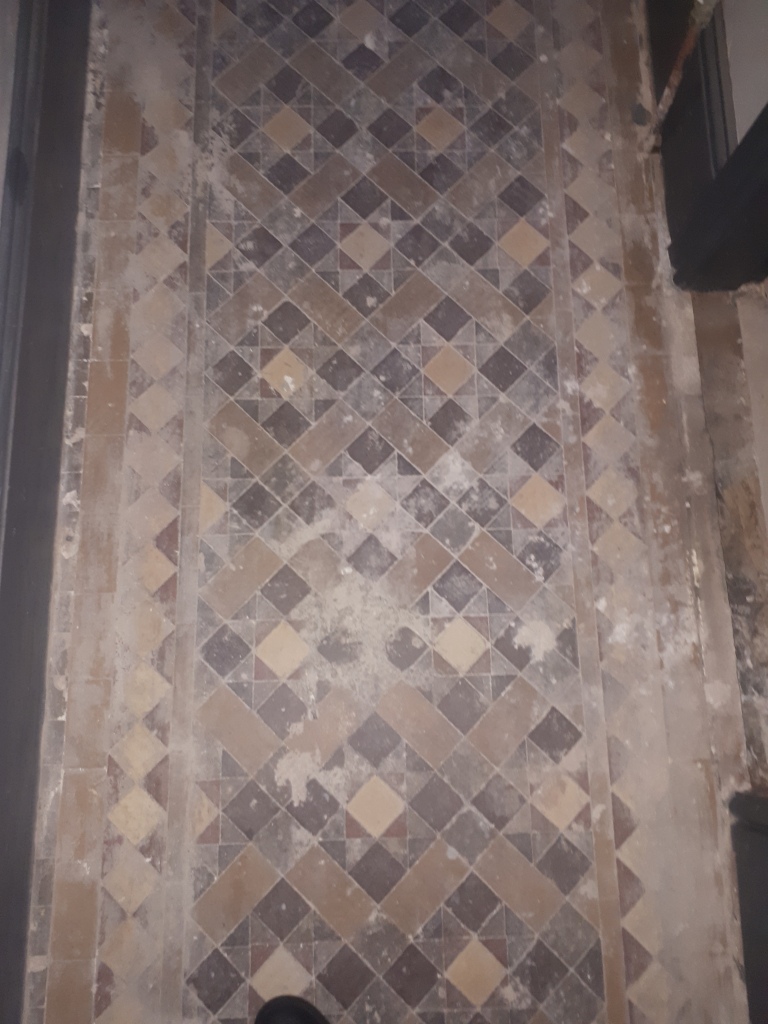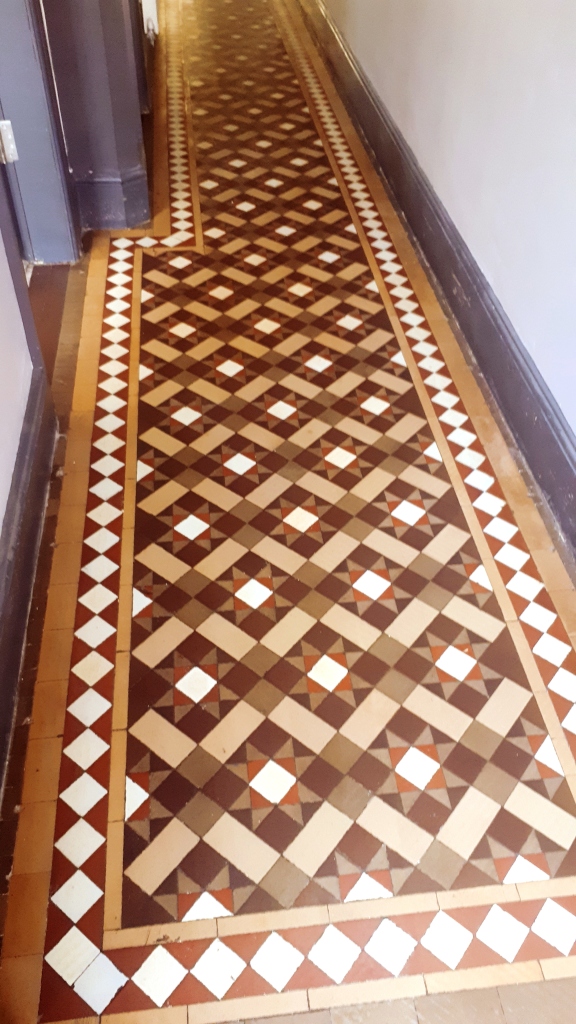A property developer contacted me earlier this year regarding a Victorian tiled hallway they had discovered at a property in Smethwick in the West Birmingham district of Sandwell. The property was being renovated into apartments and a fully restored tiled hallway would give the property the wow factor when entering the property.
 |
 |
I went over to the site to take a look and could immediately see the floor really was in a real mess. The tiles were covered in old flooring, adhesive, paint, screed, and plaster etc, I could see it was going to take some work to shift that lot. There was also an interior doorway that needed retiling. None the less these old Victorian floors are durable so none of that phased me and I was confident of a good result.

Restoring a Victorian Tiled Hallway Floor
I got the go-head from the developer and started work by tacking the loose tiles around one of the inner doorways. I seem to see a lot of this around door thresholds I can only assume its due some movement in the subfloor that can happen between different sections on a building.
With that section out of the way I started removing the screen from some of the more stubborn areas. For this I applied a strong dilution of Tile Doctor Grout Clean-up and after letting it soak in for fifteen minutes to soften the compound, I was able to scrape it away with some assistance from a steamer.
When this was completed, I covered the floor with a strong combination of Tile Doctor Pro-Clean and Remove & Go and left to dwell a good 20 minutes this time, topping it up every so often so it didn’t dry out. These products combine to make a powerful tile cleaner/coatings remover that would make quick work of cleaning up the floor. The cleaning cocktail was then scrubbed into the tile with a 200-grit diamond pad fitted to rotary machine. The slurry was then then removed using a wet extraction vacuum.
After reviewing the whole floor, I picked out those areas that needed more attention which were a few stubborn areas and the edges of the floor where the rotary machine can struggle to impact. I resolved those problems by hand with small diamond blocks which come in several coarse grits. Once I was finished tackling those, I took a step back to look at the floor and was really pleased with how the restoration was going, it was unrecognisable from when I had first come to view it.
Original Victorian floor were laid well before the invention of plastics and the damp proof membrane and in many cases are laid on top of compressed rubble. As a result, it’s important to allow moisture from the subfloor to be able to rise through the tile so it can evaporate at the surface. The previous coverings will have restricted this from happening and so I was concerned about the possibility of moisture and salts being trapped in the floor. Salts especially can be an issue as when they do make it to the surface, they can leave unsightly white deposits of the surface of the tile a process known as Efflorescence.
To counter this, I gave the whole floor an acid rinse with more Grout Clean-up worked in with a 400-grit diamond pad, this would neutralise the salts and give the tiles a further clean. It will also help neutralise the pH levels in the tiles after the use of the alkaline cleaning products earlier. To do this I applied and scrubbed it in with a 400-grit diamond pad to help with any issues. The floor was then rinsed with water and extracted as before to remove any trace of product.
Sealing a Victorian Hallway Tiles
The floor was left to dry for two days and on my return, I checked the floor for moisture with a damp meter to satisfy myself it was fully dry and ready to accept a sealer which was the last step in the restoration.
For this floor I chose to go with Tile Doctor Colour Grow which is a hard-wearing impregnating sealer that will cope with the foot traffic you would expect in a busy hallway. Colour Grow is also fully breathable so will cope well with any potential moisture rising through the tile and being a colour enhancer, it would help to make the beautiful colours in the Victorian tiles stand out.
 |
 |
My customer was very happy with the result which was a total transformation and should do well to attract new tenants to the property when its finished. For aftercare I left the customer with a bottle of neutral tile cleaner to maintain the floor, its important to use a neutral pH product on sealed tiles as stronger products will reduce the life of the sealer.
